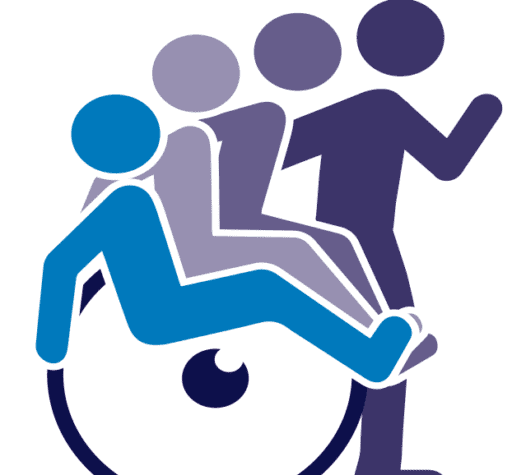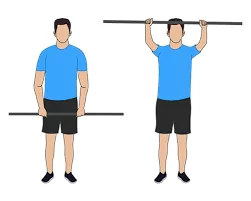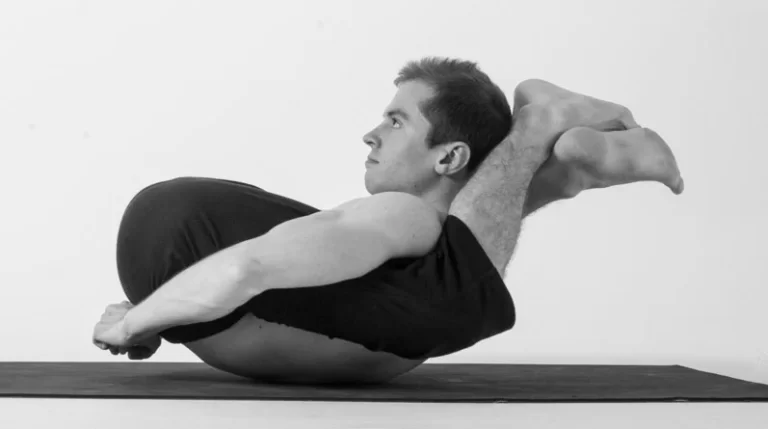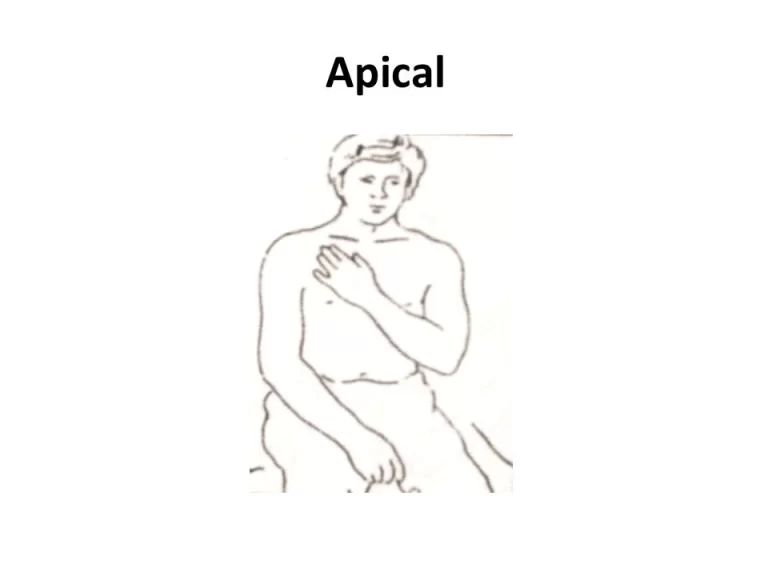7 Best Pelvic Stabilization Exercises
Table of Contents
Introduction:
Maintaining strong and stable pelvic muscles is critical for excellent posture, core strength, and injury avoidance. The pelvis functions as the spine and hips’ basis, supporting daily activities such as walking, sitting, bending, and lifting. Pelvic muscles that are weak or unstable can cause back pain, hip pain, and limited movement.
Targeted exercises can help you improve balance, develop deep core muscles, and improve general stability. In this tutorial, we’ll look at the 7 Best Pelvic Stabilization Exercises You Can Do At Home to Help Build a Stronger, More Supportive Foundation for Your Body.
Benefits of the Seven Best Pelvic Stabilization Exercises:
- Improves Core Strength – Strengthening the pelvic stabilizers engages the deep abdominal and back muscles, creating a strong foundation for general body strength.
- Improves Posture – Stable pelvic muscles aid in spinal alignment, preventing slouching and boosting upright posture.
- Back and hip pain are reduced by these exercises, which balance muscle activity around the pelvis.
- Improves Balance and Coordination – Strong pelvic stabilizers help you maintain balance throughout routine motions and physical activity.
- Prevents Injuries: A stable pelvis reduces the chance of strains, sprains, and overuse injuries, particularly during sports and exercises.
- Supports Mobility and Flexibility – These exercises improve pelvic control, making walking, jogging, bending, and lifting easier and safer.
- Promotes Functional Fitness – Pelvic stability immediately enhances everyday functional activities, allowing you to do chores with less effort and more efficiency.
7 Best Pelvic Stabilization Exercises Video
7 Best Pelvic Stabilization Exercises:
Bridge Pose:
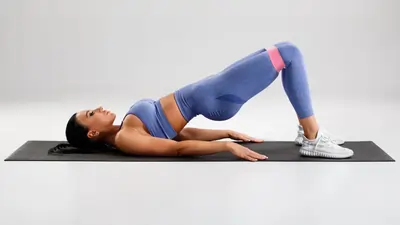
The Bridge Pose is a simple yet effective exercise that targets the glutes, hamstrings, and lower back while also working the core and pelvic floor muscles. This exercise stabilizes the pelvis and maintains spinal alignment by raising the hips off the ground and keeping them in place.
It relieves lower back pain, increases hip mobility, and provides a solid platform for daily activities. Regular practice of the Bridge Pose improves both strength and stability, making it one of the most effective pelvic support exercises.
Bird Dog Exercise:
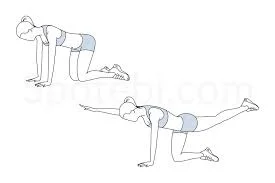
The Bird Dog exercise is extremely beneficial for improving pelvic stability, core strength, and spinal alignment. This controlled movement tests your balance and coordination while working the deep abdominal, back, and hip muscles that support the pelvis. The Bird Dog exercise reduces lower back pain, improves posture, and educates the body to retain stability during dynamic movements.
Clamshells:
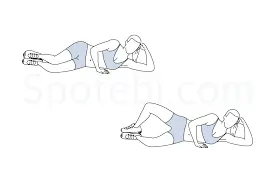
The Clamshell exercise is an excellent way to strengthen the gluteus medius and hip stabilizers, which are essential for pelvic alignment and control. This simple yet effective action targets weak hip and pelvic muscles, which improve balance, reduce lower back strain, and prevent knee and hip problems. Clamshell exercises improve pelvic stability, making daily motions and workouts safer and more efficient.
Side Plank:

The Side Plank is a core-strengthening exercise that works the obliques, hip stabilizers, and deep abdominal muscles to maintain pelvic alignment. Holding the body in a straight line on one side requires balance and forces the pelvis to remain stable without drooping or tilting.
Side planks serve to relieve lower back pain, strengthen the hips, and increase endurance in the muscles that maintain the pelvis steady throughout daily tasks.
Hip Thrusts:

The Hip Thrust is a strong exercise that focuses on strengthening the glutes, hamstrings, and core, all of which are essential for pelvic stability. This technique, performed by pushing the hips forward while resting the upper back on a bench or mat, causes the glute muscles to contract strongly, directly supporting the pelvic and lower back.
Hip thrusts improve hip extension and control, which helps address muscular imbalances, relieve strain on the lumbar spine, and improve overall posture. This exercise promotes strength, stability, and endurance in the muscles that maintain the pelvis straight throughout daily activities and exercises.
Chair Pose:
![Chair Poses [Utkatasana]](https://mobilephysiotherapyclinic.net/wp-content/uploads/2023/12/Chair-PosesUtkatasana.webp)
Sitting back as if in an imagined chair, arms stretched front or overhead, trains the pelvis to remain stable and aligned. This position requires balance, increases lower-body endurance, and improves spinal support.
Tree Pose:

The Vriksasana (Tree Pose) is a balancing practice that develops the hips, core, and pelvic floor while increasing stability and control. This posture, which involves standing tall on one leg and resting the opposing foot against the inner thigh or calf, needs the pelvis to stay firm and aligned during the hold.
It improves balance and attention while also activating the deep stabilizing muscles that support the spine and hips. Regular practice of the Tree Pose corrects postural abnormalities, enhances coordination, and lays a firm basis for pelvic stability in everyday life.
Conclusion:
Practice moves such as Bridge Pose, Bird Dog, Clamshells, Side Plank, Hip Thrusts, Chair Pose, and Tree Pose to improve posture, balance, and mobility while lowering your risk of back and hip problems.
These exercises not only improve strength and stability, but they also make daily tasks and workouts safer and more efficient. Including them in your routine can help you maintain a healthy, well-aligned pelvis and a stronger, more robust body in general.
FAQs
When experiencing prolapse, it is critical to avoid workouts that put too much strain on the pelvic floor. This includes high-impact activities like sprinting and leaping, as well as workouts that require significant lifting or straining, such as some types of squats and crunches.
Many health practitioners advocate the finger test, which involves inserting a couple of fingers into your vagina and squeezing your pelvic floor muscles like you would while exercising. You should feel a mild squeeze on your fingertips if you are tightening your muscles correctly.
Pelvic floor therapy is a type of physical therapy that strengthens or relaxes pelvic floor muscles to address disorders such as urine incontinence, pelvic organ prolapse, chronic pelvic pain, and sexual dysfunction in persons of all ages. A physical therapist does an evaluation and develops a personalized treatment plan that may include biofeedback, manual therapy, relaxation methods, Kegel exercises, and home exercise regimens to restore optimal muscle function and coordination.
Pelvic health physiotherapists are physiotherapists who have received specialized training in the treatment of pelvic issues, including the bladder, uterus, intestines, and pelvic floor muscles and nerves.
Lumbopelvic stability can be evaluated using either equipment or clinical methods such as palpation, active straight leg raise, lumbar lordosis, pelvic inclination, and dynamic testing. Dynamic tests, such as runner position, jumping tests, single-leg squat, and dip test, are more suited.
However, as your uterus expands, you should avoid workouts that cause increased intra-abdominal pressure. Crunches and sit-ups are two workouts to avoid or modify, particularly after the first trimester.
When you initially start, it’s best to lie on your side. Then you may steadily progress and perform the exercises whether sitting, standing, walking, or exercising.
Gluteus medius
The gluteus medius and minimus muscles, which are deeper in the hip, act to move the leg sideways away from the body and regulate the pelvic posture. During walking, they play a crucial function in keeping the pelvis steady when our weight is on one leg.
The muscles involved for pelvic stability include the gluteus medius, gluteus maximus, piriformis, and deep core muscles.
The most effective exercises for strengthening the pelvic floor include Kegel exercises and those that involve the core and glutes, such as bridge posture.
Pelvic stabilization exercises help to strengthen the core, gluteal, and pelvic floor muscles, which promote pelvic stability. Kegel exercises are effective for engaging the pelvic floor, bridges and bird dogs for building core and back strength, and side planks and clamshells for strengthening the hip and outer hip muscles. Proper form is vital, so begin with simple alterations and progressively proceed through the motions while keeping regular breathing and avoiding pain.
References:
- Pelvis Stability & Strengthening Beginner Exercises. (n.d.). https://legacyclinicofchiropractic.com/wp-content/uploads/2024/03/Legacy_PelvicStabilityExercises_Beginner.pdf
- Ibrahiem, S. H., Kamel, D. M., Al-Ashmawy, H. S., & Aboelmaged, S. R. (2024). Stabilization Exercises Combined with Pelvic Floor Exercises for Pregnancy-Related Low Back Pain: A Randomized Clinical Trial. Egyptian Journal of Physical Therapy (EJPT). https://ejpt.journals.ekb.eg/article_382096_d2aa9988d2c08ed2f5ce1a41bfadad04.pdf
- Hooking the Kegel exercise. (n.d.). [Video]. Hingehealth. https://www.hingehealth.com/resources/articles/best-exercises-for-pelvic-floor/
- Unknown. (n.d.). Mobilising and strengthening Exercises in lying. https://dorsetpain.org.uk/SiteUploads/45/Uploads/B4-5.7%20Mobilising%20&%20Strengthening%20in%20Ly.pdf
